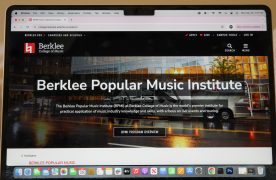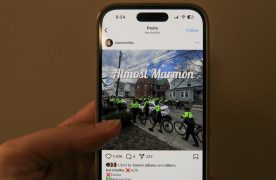Ride-sharing apps have quickly taken over the transportation industry. Between Uber, Lyft, Boston-based Fasten or San Francisco-based Chariot, users have a lot of options that leave public transportation in the dust. Why board a crowded bus or subway when there’s a private car that can get you to your destination faster and with more accommodations?
These apps have been coming up with new ways to make getting places better, including options to ride with several other passengers. This might take up more time, but is often less than half of the cost for a private ride. In fact, Lyft has just launched a new service in two select cities — San Francisco and Chicago — to test the concept of a Lyft commuter shuttle, according to a BuzzFeed article.
This shuttle seems to act as a glorified bus, creating schedules and specific routes to certain neighborhoods during peak commute hours. The standard price for a ride will be $3.50. For comparison, that’s almost one dollar more than the price of taking the T.
As ride-hailing users, we need more information. Lyft hasn’t made it clear what these shuttles will look like. Will they be regular cars given the name “shuttle” or will we be seeing little pink mustaches on the dashboards of buses? It seems counterproductive of Lyft to provide drivers with actual shuttles, since their entire business relies on individuals sharing their vehicles with strangers for a quick trip. Lyft would just become a bus company, and it certainly wouldn’t be environmentally friendly. If the company just continued to have normal-sized cars drive around as commuter shuttles, then how would that be any different from their current Lyft Line option. Hopefully, as the launch moves from just these two cities, the specific details of the program will be revealed.
Depending on the exact details of the project, this initiative could make Lyft a huge competitor to public transportation. With taxi drivers already coming at them with complaints and lawsuits, it’s ambitious to now enter the bus and subway territory. There is a very likely chance that more people would opt to use this service rather than public transportation. It may be more expensive, but it’s private, cleaner, faster and more reliable. With all those pros, why would commuters continue to struggle onto crowded busses and unreliable subway systems? Lyft has the advantage of using technology to make their transportation both user-friendly and accurate. Many cities are lacking that ease of access to public transportation. Even in Boston, T-tracking apps aren’t always factual or don’t account for buses that are out of service or driving express. A ride-hailing bus, while not essential, is certainly in the background of what city residents need. However, the same cannot be said for every city within the United States. While Los Angeles is lacking a good public transportation system and could benefit from a carpool service, New York City residents would not be interested in a more expensive version of the subway that already gets the job done.
Even with its faults, there’s something to be said for public transportation. Many upper class individuals can go through their daily lives without ever having to interact with someone not in the top two percent. However, public transportation remains one of the locations where people of all economic classes interact with each other. A banker, architect, mother, college student and homeless person can sit next to each other on a public bus or subway, while there’s practically no other place where their interaction could be possible. While public transportation isn’t necessarily facilitating conversation, it’s important that people are simply surrounded by others from the poverty line to the highest level of wealth. There’s a real possibility that Lyft’s shuttle service could put an end to this. Wealthier individuals could easily choose to take advantage of the cleaner and more private mode of transportation rather than use the public commuting service. This only adds to the barrier between the poor and the decently well-off.
Others would argue that instead of widening the socioeconomic gap, the private sector is just filling a need that the public sector can’t handle. If Lyft’s shuttle-hailing service is successful, it’s because they had an edge over all modes of public transportation. Uber and Lyft’s presence in their traditional forms shows that there is a problem with transportation. Individual riders have chosen to use these ride services because the public sector is lacking in terms of convenience and accuracy. Uber and Lyft are taking away profit from taxi drivers because taxis are unsatisfactory, and they’ll do the same to buses and subway systems if patrons are continuously let down by them. If this is successful, then Lyft made the smart decision to launch this shuttle program. It gets to a point where public transportation is no longer worth the benefits.
When considering recent events, it’s clear that Lyft is taking advantage of Uber’s recent public relations crises. Between unsavory management practices and an extremely undiversified workforce, Uber’s approval ratings must be among the lowest they’ve ever been. Lyft has always maintained a relatively positive reputation. The company has become involved in community service initiatives and publicly protested President Donald Trump’s immigration ban, which many users appreciated. It even prompted loyal Uber customers to make the switch. Now is the time for Lyft to make their move and prove themselves to be the better ride-hailing company.
One thing to remember, however, is that Lyft and Uber started out as just that — ride-hailing companies. They ensured private, personalized and comfortable transportation for those willing to pay the price. However, options to ride with more and more passengers almost defeats their initial purpose.













